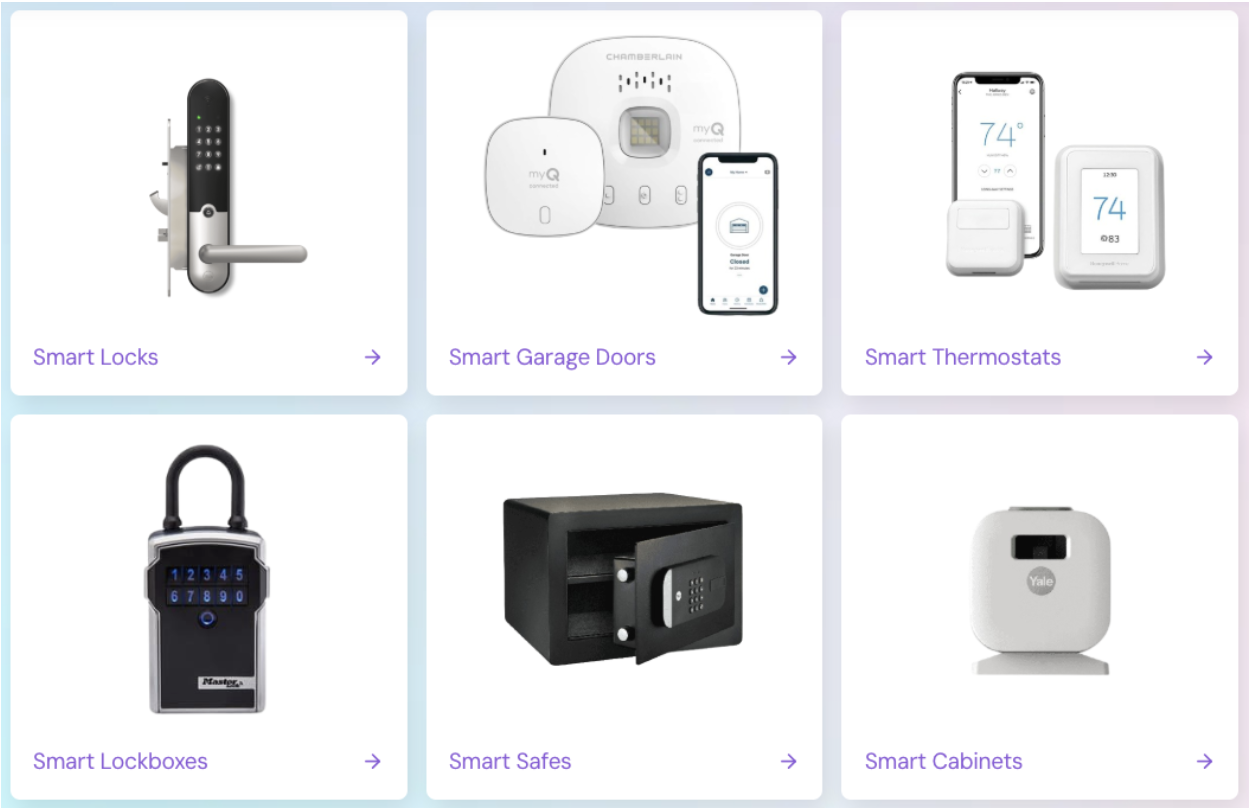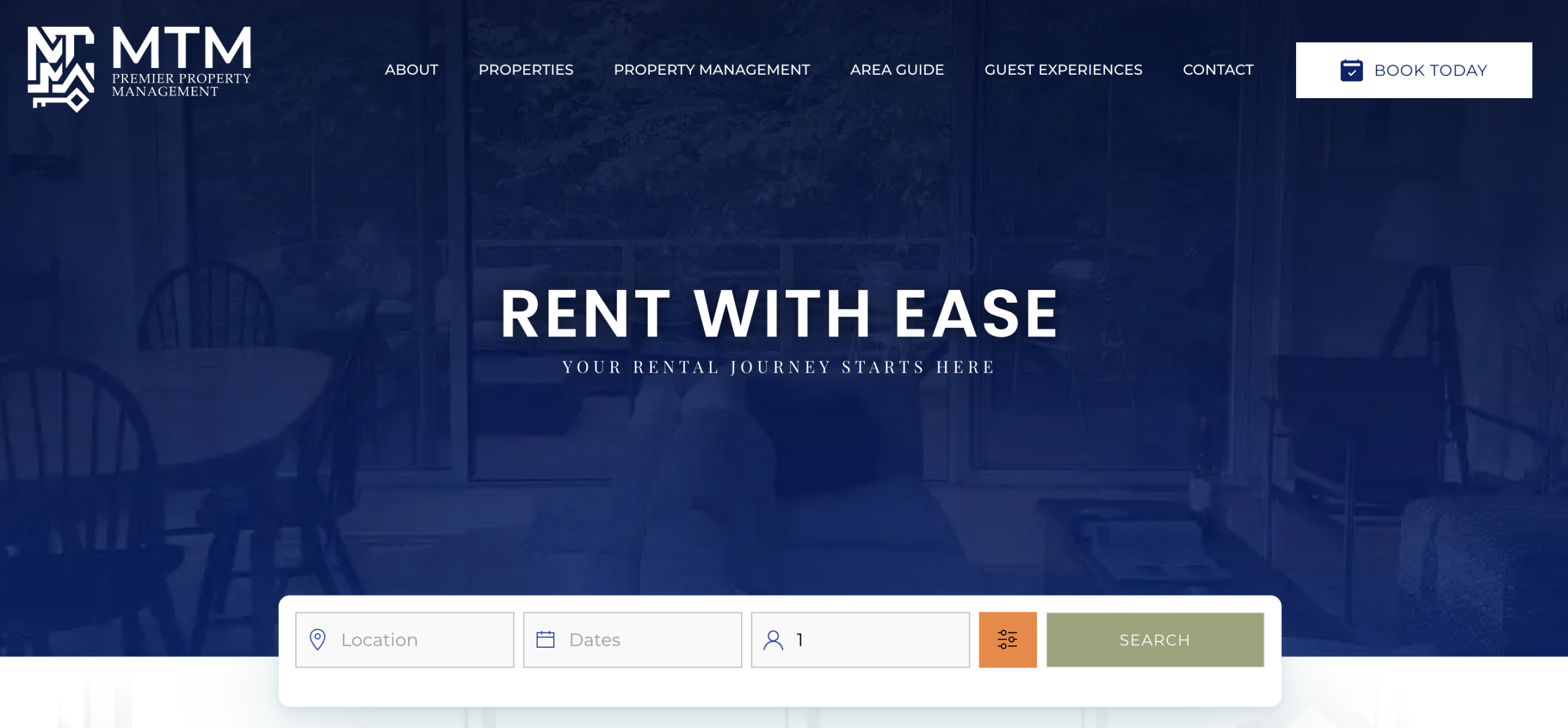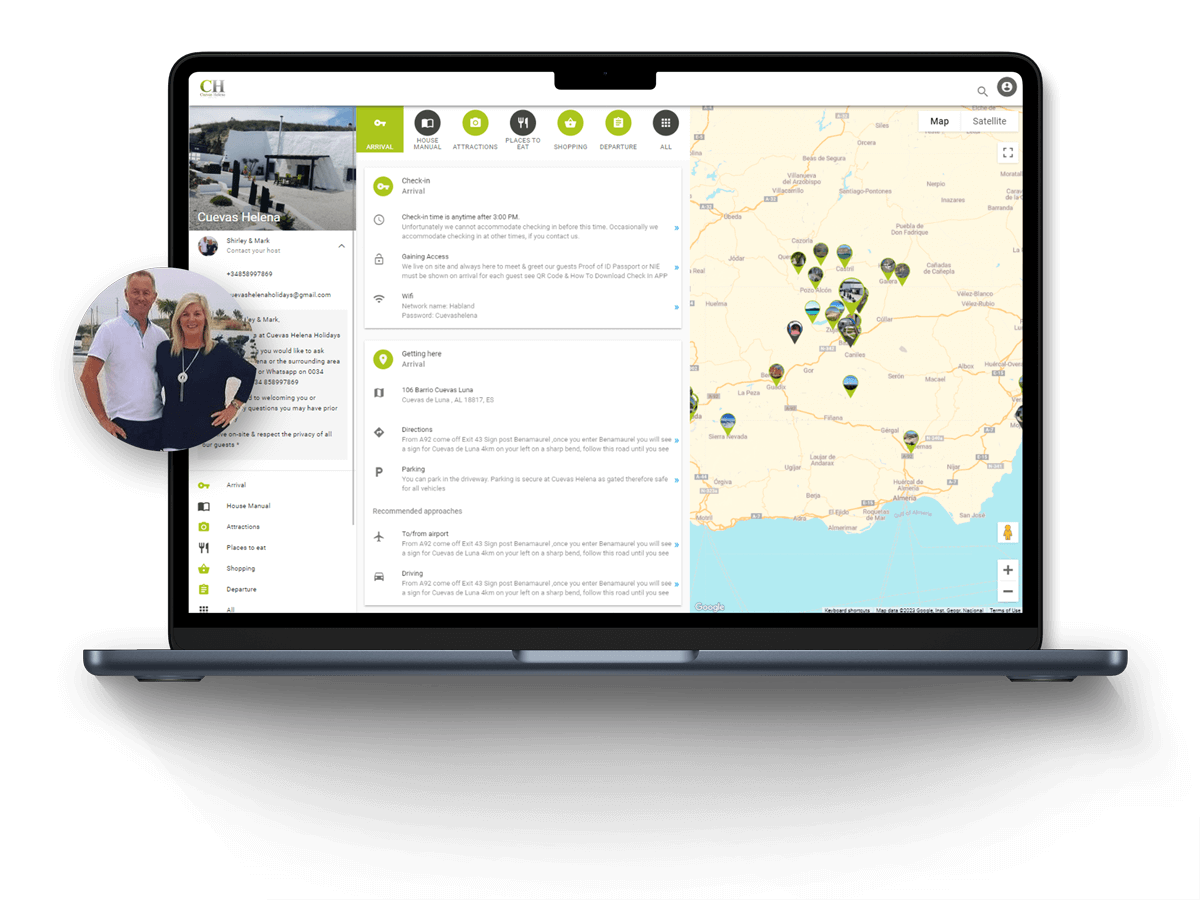For those with a property in the right location, corporate housing is a lucrative venture. Relocations, business trips, and traveling workers mean you have a steady stream of tenants needing fully furnished short-term housing.
But corporate housing needs to be done right. It’s not as simple as listing a long-term let or a vacation rental on a specific platform and waiting for bookings. Developing a strategy and preparing your properties takes upfront work.
Let us guide you through what to do in this article. We explain what corporate housing rentals involve, whether it’s right for you, and provide a step-by-step list for getting set up.
What is corporate housing? And why should you consider it?
Corporate housing is for professionals like traveling nurses or military personnel seeking temporary accommodation while they work away from home. You ordinarily make a deal with their employer, but you may work directly with employees, too.
Unlike long-term rentals, corporate housing agreements typically last for one month up to a year. The arrangement offers clients more flexibility and convenience because they can quickly arrange furnished properties for their workforce. As part of the deal, they can also usually access extras like a cleaning service and airport pickup.
So what’s in it for you? Corporate housing is experiencing a surge in demand as remote and mobile work becomes more popular. You can fill your calendar all year round, and corporate clients will pay higher monthly rates for your service than long-term tenants and vacation rental guests.
How to decide if you should rent your property as corporate housing
There are many benefits to corporate housing, but it might not be suitable for every property. Here are key factors to consider before moving into corporate rentals:
- Regulations: First things first, are you allowed to turn your property into a mid-term rental? Check zoning laws, HOA rules, and lease requirements to confirm what’s possible.
- Location and demand: Properties near business hubs attract more corporate tenants. For example, Lodgeur founder and CEO, Sébastien Long, says his properties are in locations within walking distance or a short commute from major hospitals. “That means we can accommodate medical professionals during rotations and assignments,” he says, “We’re also close to major offices in Downtown Houston, the Energy Corridor, and the Galleria, Greenway, and Upper Kirby stretch.”
- Property readiness: Corporate guests need all the amenities so they can settle in as quickly as possible and focus on work. You need to optimize rental properties for business clients while creating a welcoming and comfortable space. Focus on functionality above all else, and make the space neutral because too many personal details may make it harder for guests staying for months to feel at home.
- Upfront costs: Furnishing and preparing a property for mid-term tenants calls for a high upfront investment. Calculate whether potential income offsets these costs and delivers the financial return you expect. Cutting corners early can cause problems later, so be sure you are willing and able to invest in your property.
- Preference: Is this what you want to do? If you prefer the sound of running a quaint little bed and breakfast in the countryside, pitching your properties to companies and meeting their needs may not be for you.
How to rent corporate housing: A step-by-step guide for property owners
Perhaps you’re figuring out what to do with an investment property or looking to expand your existing rental business. Whatever your starting point, there are steps you must take to succeed in corporate housing.
Step 1. Research local short and mid-term rental regulations
Before doing anything, research what types of business activities are permitted in your area. Many regions restrict what you can do, and overlooking these laws can lead to hefty penalties.
First, see what length of stay is allowed and whether there are any conditions. Your zoning area may ban owners from letting residential properties for fewer than 30 days or require you to remain on the property at all times. Some cities, like Los Angeles, limit the number of days you operate within a year and only let you use your primary residence.
Next, make sure you’ve applied for all the necessary permits or business licenses. You may need several to cover both short and long-term stays.
A simple way to start is by checking local government websites. If anything is unclear, they usually provide a number or email you can contact. But you can also read our Hostfully short-term rental regulation series for an overview of the legal landscape in popular regions.
Step 2. Set up a fully furnished property
Make sure your property is ready to live in from the moment a tenant arrives. As Long says, “The key things that people notice are the comfort we offer and the comprehensive inventory.” This step involves setting up the following:
- High quality furniture
- Full kitchenware
- Laundry facilities
- Linens like towels and sheets
- Workspaces
- Fast, reliable internet
Adding smart devices can make your properties seem more high-end and provide a better guest experience while saving you time. Everything can be managed from afar. This means you can guarantee rentals are ready for guests and give them secure access, but actually reduce your travel time.

Step 3. Price competitively based on market demand
Find the optimal price to attract corporate clients while still turning a profit. Rates usually sit between hotels and long-term leases, so if you’re new to corporate housing, use this as your benchmark.
You can start by researching what nearby competitors are charging. Factor in location, property type, and services included when making your comparison. For example, you can charge more if you have a larger rental than a similar business in your area.
Dynamic pricing tools like Hostfully’s integrations can help you automate pricing. They continuously monitor market data and set optimal rates. This helps you get more optimal prices without spending more time on research.
Step 4. List on corporate housing marketplaces
Corporate tenants often start their search on specialized platforms like Furnished Finder. Listing your property can help you boost your visibility and get more clients.
The key to making your listing stand out is by including a series of high-quality photos, a detailed description, and a full inventory of amenities. Highlight features that matter most to business travelers, such as a dedicated workspace, fast Wi-Fi, and proximity to local offices or hospitals.
Also, keep your listing up to date and respond quickly to inquiries. Platforms often rank responsive hosts higher in search results, which can help you secure bookings faster.
Channel managers like Hostfully make it easy to sync availability and pricing across multiple platforms. They share details from your property management system (PMS) everywhere you list. This reduces the risk of double bookings while saving you the hassle of updating each site manually.
Step 5. Create a direct booking site
While listing sites expand your reach, relying on them limits your control and increases the fees you pay. A website makes your brand look more established and captures more direct bookings.
Your booking site should include high-quality photos, clear descriptions, and transparent pricing like your listing pages. But you must also add secure payment options and make sure it’s easy to navigate on big and small screens. Corporate clients may be less inclined to trust that you can deliver a professional service if you have a clunky website.

Don’t have any developer skills? With Hostfully, you can build a branded, no-code website that connects to your PMS. You can establish a presence online and give potential guests the right first impression with minimal effort.
Step 6. Network with HR and global mobility teams
Establishing an online presence is crucial, but don’t forget about old-fashioned methods like networking. You can develop a deeper relationship with clients and get more referrals.
Start by identifying companies that frequently relocate staff to your area. They’ll typically be in industries like sales, healthcare, and education, where traveling workers are common, but consider all sectors to expand your range. The organization’s website should indicate the areas they serve, and career pages can tell you whether jobs are on placement.
Then try sending messages to HR at these companies through email or LinkedIn. Be upfront about what you’re offering and keep your message concise to respect their time.
Step 7. Write a solid rental agreement
Corporate clients expect a rental agreement, and many places require them by law for mid to long-term leases. Make sure you have one in place to keep everyone happy. A comprehensive agreement includes:
- Services included
- Monthly rate
- Duration
- Security deposits
- Guest responsibilities
- Host responsibilities
Platforms like Hostfully can simplify the process by automating digital rental agreements. Our software sends the document, tracks and collects the signature, and keeps everything stored on the system. This prevents you from losing track, especially when you’re managing multiple commercial properties.
Consider which terms work for you while providing guests with the flexibility they need. For example, Long says, “We will place a hold on the accommodation in case they need to extend, so that no one else can book it. And, in the event that they need to extend last minute, we have multiple locations and units in each location, so we are usually able to find a comparable apartment in our portfolio to switch them to.”
Step 8. Create a digital guidebook for each property
Tenants want to settle in quickly so they can focus on work. A digital guidebook can show them how to make the most of your property and tell them about the local area. All you have to do is create the guidebook once, regularly update it, and you can send it to every guest automatically ahead of arrival.
Here’s what you need to include:
- Directions to the property
- The check-in process
- Access codes
- The WiFi password
- Instructions for all appliances
- House rules
- Nearby services like gyms and hairdressers
- Your recommendations for local restaurants
- Your contact details in case of any further questions
Platforms like Hostfully enable you to create professional-looking guidebooks for every property. You can give guests access by sending them a link in a message. It’s easy for them to open and reference, and it includes multimedia options like text, image, and video.

Step 9. Automate property management with a PMS
Corporate clients expect a high-end service, so they’re hard to impress. Make sure you can provide a smooth experience by automating key processes with a PMS like Hostfully.
Hostfully’s key automation feature is its guest messaging. You can schedule emails for different points in the stay and use triggers and fields to personalize them for groups. If you use smart locks, you can even include unique access codes.
On top of that, Hostfully automates your task management to save time. You can streamline everything from payments and reviews to reporting in the same place. This frees you up to focus on the little details that matter to your guests, like ensuring they can find their way to the office on the first day.
How to maximize your corporate housing potential with Hostfully PMS
Corporate housing is rewarding, provided you plan carefully, invest in properties, and build relationships with the right clients. By following the right steps, you can turn your property into a reliable mid-term rental that attracts steady, well-paying tenants.
Hostfully makes every part of that process easier by giving you the tools to automate, organize, and scale. With our PMS, you can:
- Sync availability and pricing across corporate housing marketplaces
- Automate guest communication and digital rental agreements
- Create professional guidebooks that help tenants settle in quickly
- Build a branded direct booking site without any coding
- Use smart lock integrations and task automation to streamline operations
Hostfully means you spend less time juggling tasks and more on delivering the professional service that keeps corporate clients coming back.
FAQs
How do I rent my house to corporate housing clients?
You can rent to corporate housing clients by making an agreement with businesses seeking short-term housing for workers. Find these clients by listing your properties on specialized platforms like CHBO and Furnished Finder or by networking with companies. Note that HR is most likely to be the department handling corporate travelers and lease agreements.
What do corporate tenants look for in a rental?
Corporate tenants want a fully furnished apartment that’s ready to move into with essential amenities like Wi-Fi, a functional kitchen, and laundry facilities. They also value a safe, quiet location close to their temporary workplace for convenience.
Is corporate housing more profitable than long-term renting?
Corporate housing can be more profitable than traditional long-term renting because companies are willing to pay higher monthly rates for furnished properties with flexible terms. Tenants are also less likely to cause damage to your property, as they’re accountable to their employer, leading to lower operational expenses.
Do I need to furnish my home to list it for corporate housing?
Yes, corporate tenants won’t usually consider an unfurnished property. They expect a fully equipped space with furniture, appliances, and linens so they can relocate workers quickly and conveniently. Having to furnish the property themselves creates unwanted hassle.
Are there any legal restrictions to consider with corporate leasing?
Yes, corporate leasing is usually subject to local zoning laws, HOA rules, and housing market regulations. Some regions may require you to apply for a permit, undergo safety checks, and purchase mid-term rental insurance before you accept your first tenants.



